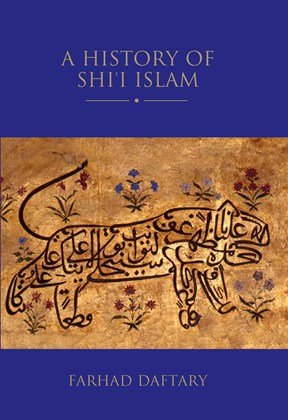A History of Shiʿi Islam
I.B. Tauris in association with the Institute of Ismaili Studies
This book is also available OPEN ACCESS to download or read online for free.
Shiʿi Muslims have played a crucial role, proportionally greater than their relative size, in furthering the civilizational achievements of Islam. Indeed, the Shiʿi scholars and literati of various branches and regions, including scientists, philosophers, theologians, jurists and poets, have made seminal contributions to Islamic thought and culture. There have also been numerous Shiʿi dynasties, families or individual rulers who patronized scholars, poets and artists as well as various institutions of learning in Islam. In spite of its significance, however, Shiʿi Islam has received little scholarly attention in the West, and when it has been discussed, whether in general or in terms of some of its subdivisions, it has normally been treated marginally as a ‘sect’ or a ‘heterodoxy’. The present book draws on the scattered findings of modern scholarship in the field, attempting to explain the formative era of Shiʿi Islam, when a multitude of Muslim groups and schools of thought were elaborating their doctrinal positions. Subsequent chapters are devoted to the history of the Ithnaʿasharis, or Twelvers, the Ismailis, the Zaydis and the Nusayris (now more commonly known in Syria as the Alawis), the four communities that account for almost the entirety of the Shiʿi Muslim population of the world. The result is a comprehensive survey of Shiʿi Islam that will serve as an accessible work of reference for academics in both Islamic and Middle Eastern studies, as well as the broader field of the History of Religions, and also more general, non-specialist readers.
Genealogical Tables and Lists
Preface
Note on Transliteration and Dates
Abbreviations
1. Introduction: Progress in the Study of Shiʿi Islam
Diversity in Early Islam
Medieval Sunni Perceptions
Medieval European Perceptions
Orientalist Perspectives
Modern Scholarship on Shiʿi Islam
2. The Origins and Early History of Shiʿi Islam
Origins of Shiʿism
The Early Shiʿa
The Kaysaniyya
The ghulat
The Early Imamiyya
The Imami Shiʿi Doctrine of the Imamate
3. The Ithnaʿasharis or Twelvers
The Later Twelver Imams and the Hidden Mahdi
From the Occultation of the Twelfth Imam to the Mongol Invasions
From Nasir al-Din al-Tusi to the Advent of the Safawids
From the Safawids to Early Modern Times
From Around 1215/1800 to the Present
4. The Ismailis
The Early Ismailis
The Fatimid Phase in Ismaili History
The Tayyibi Ismailis: The Yamani and Indian Phases
The Nizari Ismailis: The Alamut Phase
Later developments in Nizari Ismaili History
5. The Zaydis
The Early Zaydis
The Zaydis of the Caspian Region in Persia
The Zaydis of Yaman
6. The Nusayris or ʿAlawis
Nusayri Studies
History of the Nusayris
The Nusayri-ʿAlawi Doctrines
Glossary
Notes
Bibliography
Index
Farhad Daftary is the Co-Director of The Institute of Ismaili Studies, London, and Head of the Institute’s Department of Academic Research and Publications. Since the mid-1960s, when he was completing his doctoral studies at the University of California, Berkeley, he has cultivated his interest in Shiʿi studies, with special reference to its Ismaili tradition, on which he is an authority. As well as serving on various editorial boards, Dr Daftary is a consulting editor of Encyclopaedia Iranica, co-editor (with W. Madelung) of Encyclopaedia Islamica, and the general editor of the ‘Ismaili Heritage Series’ and the ‘Ismaili Texts and Translations Series’. He is the author and editor of numerous publications, including The Ismāʿīlīs (1990; 2nd ed., 2007), The Assassin Legends (1994), A Short History of the Ismāʿīlīs (1998), Intellectual Traditions in Islam (2000), Ismaili Literature (2004), A Modern History of the Ismailis (2011), as well as many articles and encyclopaedia entries. Dr Daftary’s books have been translated into Arabic, Persian, Turkish, Urdu, Gujarati and various European languages.

